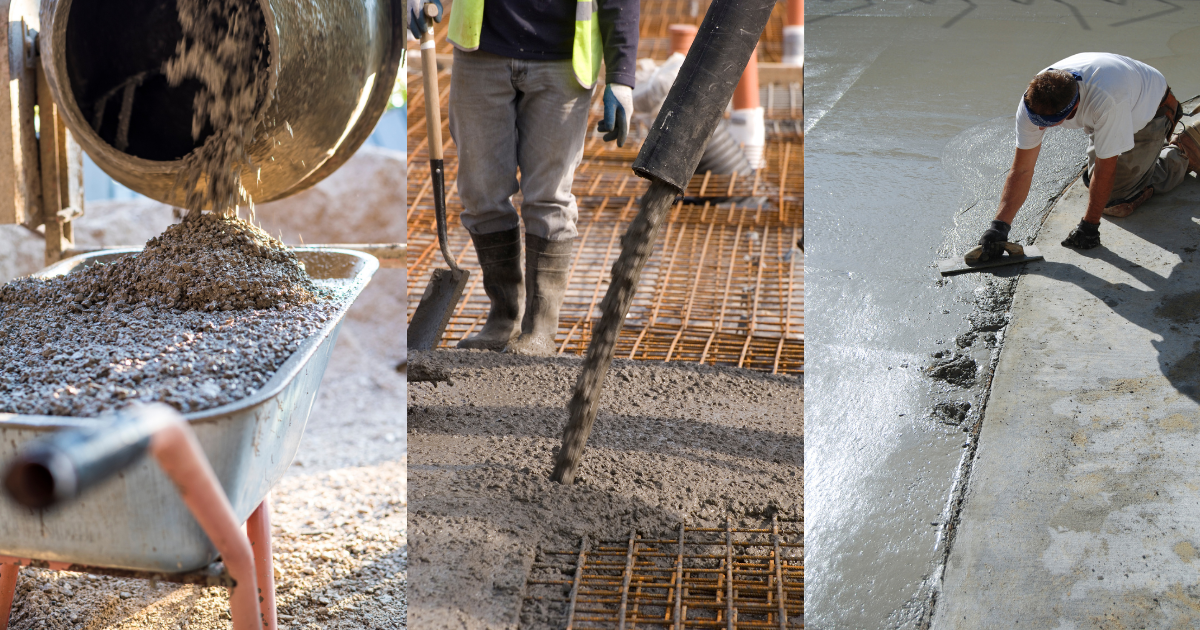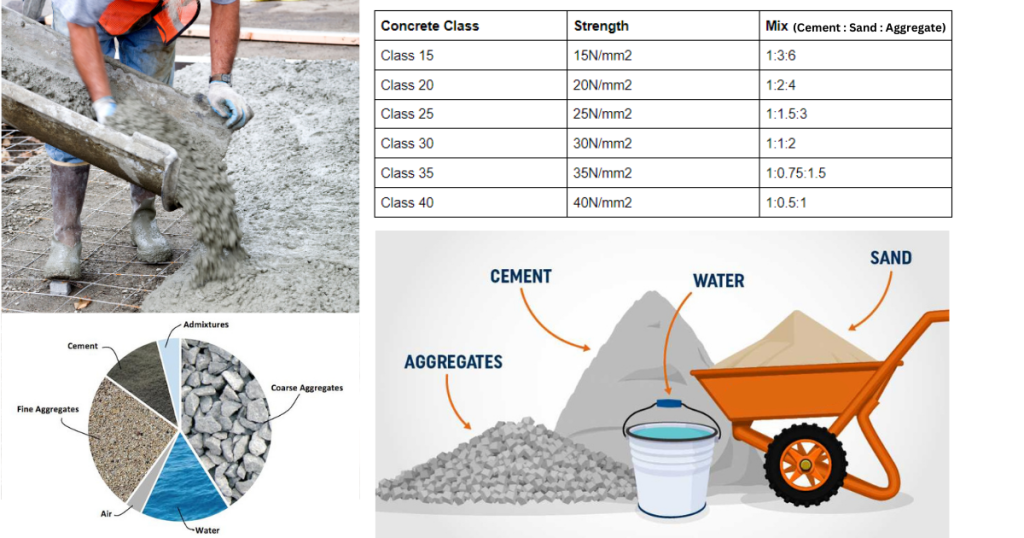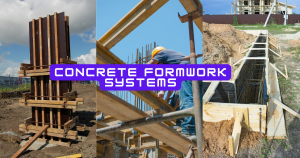Introduction
Ready-mix concrete is a versatile and convenient building material that plays a crucial role in various construction projects. Whether you’re working on a patio, foundation, extension, or any other home improvement endeavor, ready-mix concrete offers a cost-effective and hassle-free solution compared to mixing concrete manually. This article aims to provide an in-depth understanding of ready-mix concrete, including its types, strengths, cost considerations, pouring techniques, delivery options and mixing ballast concrete ratio.
What Is Ready Mix Concrete?
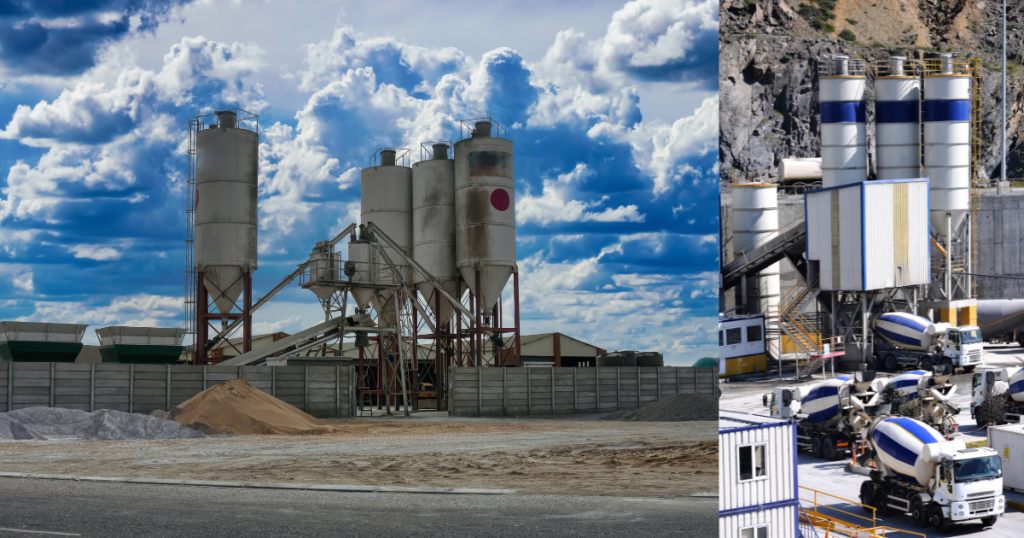
Pre-mixed ready-mix concrete
Pre-mixed ready-mix concrete refers to concrete that is prepared off-site and delivered to the construction site. It is instantly pourable and ready to use, saving time and effort compared to manual mixing. The concrete is carefully mixed according to the desired specifications before being transported to the site.
Volumetric ready-mix concrete
Volumetric ready-mix concrete is mixed on-site in specially designed trucks called volumetric mixers. This allows for precise mixing of the exact amount of concrete needed for the project. By mixing the concrete on-site, wastage is reduced, and costs are minimized as only the required amount is prepared.
Advantages of ready-mix concrete over manual mixing
Ready-mix concrete offers several advantages over manual mixing. Firstly, it saves time and labor as the concrete is prepared in advance or mixed on-site, eliminating the need for manual mixing and ensuring consistent quality. Secondly, it provides convenience as the concrete is delivered directly to the construction site. Thirdly, ready mix concrete is produced in controlled conditions, resulting in better quality control and consistency. Finally, ready-mix concrete allows for greater flexibility in terms of customization, as different grades and strengths can be easily obtained from suppliers.
Determining the Right Type of Ready Mix Concrete
Grades and strength ratings of ready mix concrete (C20 to C40)
Ready mix concrete is available in different grades, each corresponding to a specific strength rating. The grades range from C20, which is a lightweight mix suitable for patios and garden walls, to C40, a heavy-duty commercial grade used for roadworks and structural beams. The strength rating represents the maximum pressure the concrete can withstand after 28 days of curing.
Matching the concrete grade to the project’s requirements
The selection of the appropriate concrete grade depends on the specific requirements of the project. Factors such as the intended use, load-bearing capacity, and environmental conditions need to be considered. Consulting with concrete suppliers and professionals can help determine the most suitable grade for the project.
Seeking recommendations from concrete suppliers
Concrete suppliers have expertise in the field and can provide valuable recommendations based on their knowledge and experience. They can assess the project requirements and advise on the appropriate grade and mix of ready-mix concrete. Their guidance ensures that the right type of concrete is chosen, optimizing the project’s success.
Cost Considerations of Ready Mix Concrete
Paying for the exact amount of concrete needed
Ready mix concrete offers cost advantages as it allows customers to pay only for the concrete they require. Volumetric mixers enable precise measurement and mixing of the necessary amount of concrete, reducing wastage and cost.
Cost savings compared to manual mixing
Buying ready-mix concrete from suppliers can be more cost-effective compared to manually mixing concrete from raw materials. The economies of scale achieved by suppliers, efficient production processes, and reduced labor costs contribute to cost savings for customers.
Flexibility for changing project plans
Ready mix concrete offers flexibility in changing project plans. If the concrete requirements change during the course of the project, suppliers can adjust the quantity and mix of ready-mix concrete accordingly. This flexibility minimizes the risk of material waste and cost overruns.
Working with Ready Mix Concrete
Workability and pouring window of concrete
Ready-mix concrete has a limited workability time, typically around one and a half hours before it starts to harden. It is crucial to plan the pouring and placement of the concrete accordingly to ensure optimal results. The workability time may vary depending on factors such as weather conditions and the specific mix of concrete.
Timely placement and leveling for optimal results
Ready mix concrete should be placed and leveled within one hour of being discharged from the truck to achieve the desired finish and strength. Proper coordination and preparation are essential to ensure the concrete is poured, spread, and leveled efficiently.
Concrete strength development over 28 days
Ready mix concrete requires curing time to reach its full strength. The curing process typically takes 28 days, during which the concrete gradually gains strength. It is important to consider this time frame when planning construction activities and assessing the structural integrity of the concrete.
Pouring Ready Mix Concrete
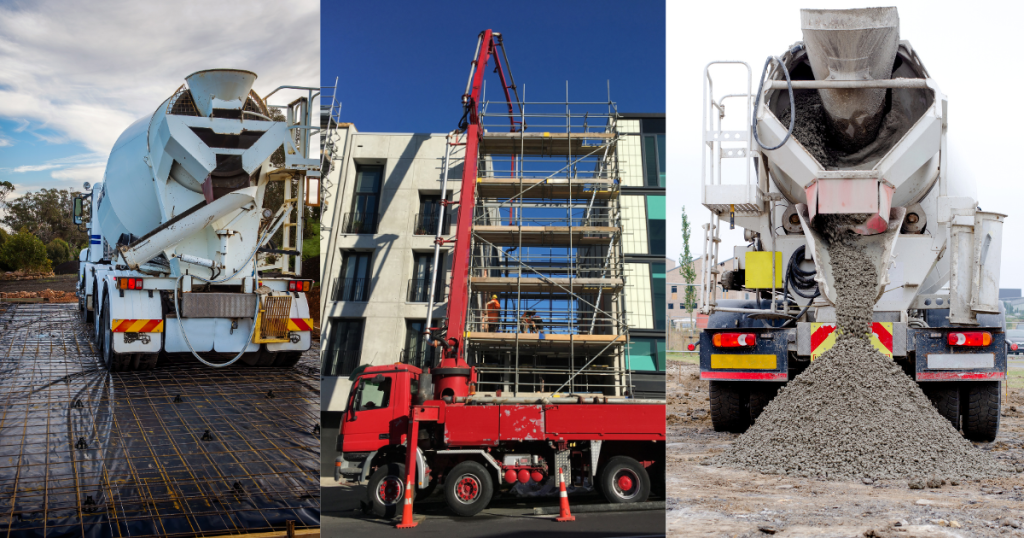
Utilizing concrete pump trucks for directed pouring
Concrete pump trucks feature an arm or boom that can direct the flow of concrete to the desired location. This method is especially useful for reaching areas with limited access or for precise pouring in elevated or hard-to-reach locations.
Barrow service for challenging access situations
In cases where the site has difficult or restricted access, some concrete suppliers offer a barrow service. This service involves using wheelbarrows to transport the concrete from the delivery point to the desired location, ensuring that concrete can be delivered even in challenging circumstances.
Direct delivery and on-site mixing benefits
Ready-mix concrete can be conveniently delivered directly to the construction site, eliminating the need for transportation and manual mixing. When mixed on-site in volumetric trucks, the concrete can be prepared exactly as needed, minimizing wastage and optimizing efficiency.
Understanding Concrete Mix Ratios and Strengths
Concrete mix composition
Concrete is composed of cement, fine aggregates (such as sand), coarse aggregates (such as gravel or crushed stone), and water. The proportions of these ingredients in the mix ratio determine the strength and characteristics of the concrete.
Exploring the mix ratios for C20, C25, C30, C35, and C40 concrete
Each grade of concrete has a specific mix ratio that defines the proportions of cement, fine aggregates, and coarse aggregates. For example, C20 concrete has a mix ratio of 1:2:4 (cement: sand: gravel), while C30 concrete has a mix ratio of 1:1.5:3.
The impact of mix ratios on strength and durability
The mix ratio directly influences the strength and durability of the concrete. A higher proportion of cement in the mix increases the strength, while variations in the proportions of aggregates can impact the workability and other properties of the concrete.
Achieving the Ideal Mix Ratio for Your Project
Using high-quality ingredients for optimal results
Utilizing high-quality cement, aggregates, and water is essential for achieving the desired mix ratio and ensuring the overall quality and durability of the concrete. Inferior or contaminated ingredients can compromise the strength and performance of the concrete.
Accurate measurement of ingredients
Accurate measurement of the ingredients is crucial to achieve the desired mix ratio. Using proper measuring tools and techniques, such as scales, ensures consistency and reliability in the mixing process.
Benefits of utilizing a concrete mixer
Concrete mixers provide efficient and thorough mixing, ensuring uniform distribution of the ingredients and producing a homogeneous mixture. This promotes the proper hydration of the cement and enhances the overall quality of the concrete.
Mix ratio guidelines and conducting trial mixes
Adhering to the recommended mix ratio guidelines for the specific grade of concrete is crucial to achieving the desired strength and characteristics. Conducting trial mixes before the main project ensures that the mix ratio is correct and allows for adjustments if necessary.
Monitoring the slump test for desired consistency
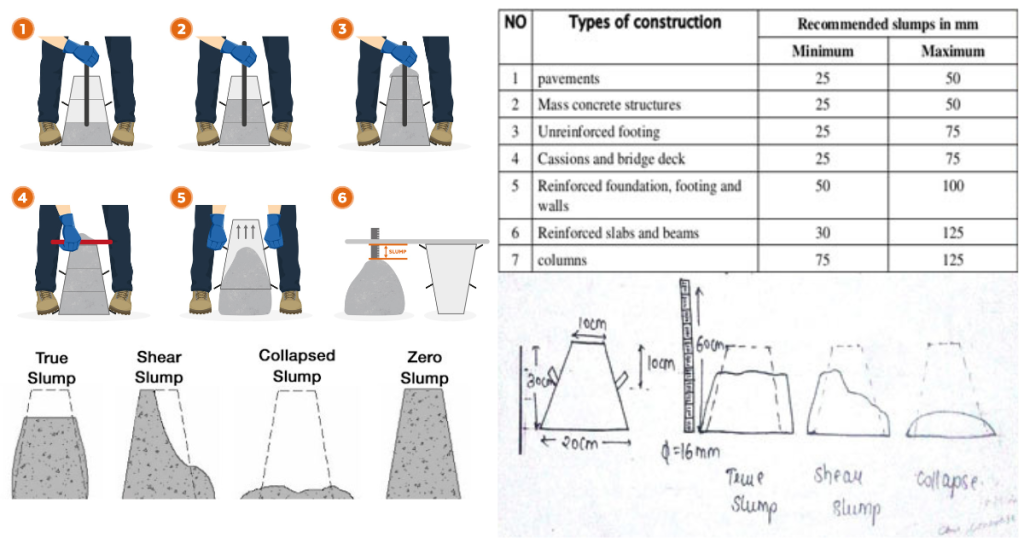
The slump test is a simple test that measures the consistency and workability of the concrete. It helps in assessing whether the mix ratio is appropriate and provides insights into the concrete’s flow and behavior during pouring.
Exploring Concrete Grades in Detail
C20 Concrete Mix
-
Mix ratio and strength:
- Mix ratio: C20 concrete has a mix ratio of 1 part cement, 2 parts fine aggregate (such as sand), and 4 parts coarse aggregate (such as gravel).
- Strength: After 28 days of curing, C20 concrete typically achieves a strength of 20 newtons per square millimeter (N/mm²).
-
Best applications:
- C20 concrete is commonly used for lightweight domestic construction projects.
- It is suitable for applications such as patio slabs, garden walls, shed bases, hot tub bases, and other non-structural elements.
C25 Concrete Mix
-
Mix ratio and strength:
- Mix ratio: C25 concrete consists of 1 part cement, 1 part fine aggregate, and 2 parts coarse aggregate.
- Strength: After 28 days, C25 concrete typically achieves a strength of 25 N/mm².
-
Best applications:
- C25 concrete is versatile and commonly used for various construction purposes.
- It is suitable for flooring, foundations, footings, filling trenches, roadworks, and groundwork.
- Its strength makes it ideal for domestic and commercial projects that require a durable and reliable concrete solution.
C30 Concrete Mix
-
Mix ratio and strength:
- Mix ratio: C30 concrete has a mix ratio of 1 part cement, 1.5 parts fine aggregate, and 3 parts coarse aggregate.
- Strength: After 28 days, C30 concrete typically achieves a strength of 30 N/mm².
-
Best applications:
- C30 concrete is commonly used for pathways, paving, heavy-duty structures, and areas subjected to heavy traffic.
- It is suitable for projects that require higher strength and durability, such as pavements, driveways, industrial floors, and areas with frequent vehicle or pedestrian use.
C35 Concrete Mix
-
Mix ratio and strength:
- Mix ratio: C35 concrete consists of 1 part cement, 1 part fine aggregate, and 2 parts coarse aggregate.
- Strength: After 28 days, C35 concrete typically achieves a strength of 35 N/mm².
-
Best applications:
- C35 concrete is a structurally strong mix suitable for demanding construction projects.
- It is commonly used for structural piling, external slabs, walls, and commercial applications that require high strength and durability.
C40 Concrete Mix
-
Mix ratio and strength:
- Mix ratio: C40 concrete has a mix ratio of 1 part cement, 1 part fine aggregate, and 1.5 parts coarse aggregate.
- Strength: After 28 days, C40 concrete typically achieves a strength of 40 N/mm².
-
Best applications:
- C40 concrete is a strong grade primarily used in commercial construction projects.
- It is suitable for creating foundations, beams, and structures that require exceptional strength, such as roadworks, com
Mixing Ballast Concrete Ratio
What is Ballast?
Ballast is a crucial component in the construction industry, consisting of a mixture of sand and gravel that serves as the coarse aggregate in concrete. It provides stability and strength to concrete structures. The achievement of the required compressive strength is essential in ensuring the durability and reliability of concrete. The ballast ratio and proper mixing techniques play a significant role in achieving the desired strength and properties of concrete.
Properties and Strength of Concrete
The properties and strength of concrete are greatly influenced by the ballast used in the mixture. The density and quantity of ballast have a direct impact on the overall density and workability of concrete. The size and shape of the ballast particles affect the strength and cohesion of the concrete mix. Different grades of concrete are determined based on their intended strength requirements, with higher grades typically utilizing a higher proportion of ballast for increased strength.
How Much Ballast Do I Need?
Determining the appropriate amount of ballast required for a concrete mix is crucial to ensure the desired strength and consistency. The weight of ballast per cubic meter is commonly used as a reference for calculating the amount needed. Additionally, understanding the volume yield of a small bag of ballast, typically around 25kg, helps in estimating the quantity required for smaller projects.
Ballast Cement Mix Ratio
The ballast-cement mix ratio is an essential factor in achieving the desired strength and workability of concrete for specific applications. The standard ratio commonly used for driveways, pathways, and patios is 1 part cement to 5 part ballast (1:5 ratio). However, alternative mix ratios such as 1:4 or 1:6 can be employed depending on the project requirements. In some cases, reinforcing bars are incorporated into the mixture to enhance the concrete’s overall strength and durability.
Concrete Mix Ratio Using Ballast
The concrete mix ratio using ballast is determined by the specific application and strength requirements. For high-strength applications like building slabs or panels, a concrete mix ratio of 1 part cement to 5 part ballast (1:5 ratio) is commonly used. On the other hand, for driveways, paths, and patios, a slightly higher ballast proportion is employed, resulting in a mix ratio of 1 part cement to 6 parts ballast (1:6 ratio).
Additional Considerations for mixing ballast concrete ratio
In addition to the ballast-cement mix ratio, there are other factors to consider when working with concrete. Depending on the project’s requirements, other materials can be added to the mixture to improve the strength and performance of the concrete. Proper blending and mixing techniques are essential to ensure a homogeneous and consistent mixture. It is also crucial to adhere to safety guidelines and recommended practices to ensure the successful and safe execution of concrete construction projects.
Conclusion
Ready mix concrete simplifies construction projects, providing a ready-to-pour solution for a wide range of applications. Understanding the types, strengths, cost considerations, and pouring techniques associated with ready-mix concrete allows for efficient planning and successful project execution. By utilizing the appropriate mix ratios, you can ensure the strength and durability of your concrete structures, tailored to your specific construction needs. Embrace the benefits of ready-mix concrete and unlock its potential for your next home improvement endeavor.
